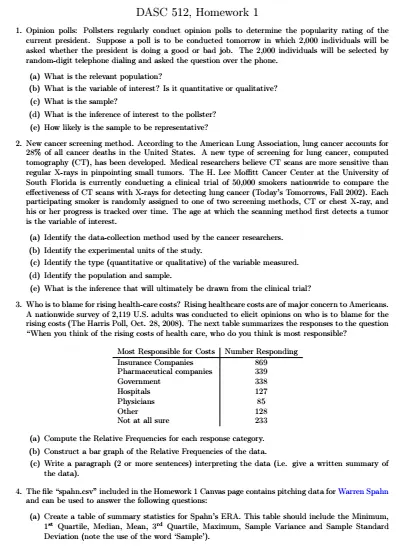Instructions
Objective
Write a python assignment program to implement screening method
Requirements and Specifications

Source Code
#**4.**
import pandas as pd
# reading and converting the data ito pandas Dataframe
data = pd.read_csv("spahn.csv")
# applaying pandas method .describe()
data.describe().T
import pandas as pd
# reading and converting the data ito pandas Dataframe
data = pd.read_csv("spahn.csv")
# applaying pandas method .describe()
data[['ERA+']].describe()
data[['SO']].boxplot()
data[['ERA']].boxplot()
data[['ERA+']].boxplot()
#**5.**
data = pd.read_csv('d5000.csv')
data.head()
data.describe()
data.plot.scatter(x = 'HR', y = 'SO')
#**6.**
data = pd.read_csv('hofbatting.csv')
data.head()
data.describe().T
import numpy as np
data = pd.read_csv('hofbatting.csv')
mid_career_keys = ['19 th Century', 'Dead Ball', 'Lively Ball',
'Integration', 'Expansion', 'Free Agency', 'Long Ball']
mid_career_values = []
for row in data[['From', 'To']].values:
From, To = row[0], row[1]
#up to the 1900 Season
if To <= 1900: mid_career_values.append(mid_career_keys[0])
#1901 through 1919
elif From > 1900 and To <= 1919: mid_career_values.append(mid_career_keys[1])
#1920 through 1941
elif From > 1920 and To <= 1941: mid_career_values.append(mid_career_keys[2])
#1942 through 1960
elif From > 1942 and To <= 1960: mid_career_values.append(mid_career_keys[3])
#1961 through 1976
elif From > 1961 and To <= 1976: mid_career_values.append(mid_career_keys[4])
#1977 through 1993
elif From > 1977 and To <= 1993: mid_career_values.append(mid_career_keys[5])
#after 1993
elif From > 1993: mid_career_values.append(mid_career_keys[6])
else:
mid_career_values.append('not-labled')
data['mid-career'] = mid_career_values
data.head()
data.groupby('mid-career')['mid-career'].value_counts()
data.groupby('mid-career').sum()
hist = data['mid-career'].hist()
data.plot.scatter(x = 'OBP', y = 'SLG')
OPS_values = []
for row in data[['OBP', 'SLG']].values:
OPS_values.append(row[0] + row[1])
data['OPS'] = OPS_values
data.columns
data[['OBP', 'SLG', 'OPS']].head()
data['OPS'] = (data['OPS'] - data['OPS'].mean())/data['OPS'].std(ddof=0)
data['OPS'].head()
data.plot.scatter(x = 'OPS', y = 'mid-career')
HR_AB_values = []
for row in data[['HR', 'AB']].values:
HR_AB_values.append(row[0] + row[1])
data['HR/AB'] = HR_AB_values
data['HR/AB']
df=data.groupby('mid-career')['HR/AB']
df.describe()
data.boxplot()
Similar Samples
Explore our curated selection of programming assignment samples at ProgrammingHomeworkHelp.com. From Java and Python to C++ and assembly language, these examples illustrate our commitment to delivering clear, efficient, and well-structured code solutions. Perfect for students seeking guidance and inspiration for their programming projects.
Python
Python
Python
Python
Python
Python
Python
Python
Python
Python
Python
Python
Python
Python
Python
Python
Python
Python
Python
Python